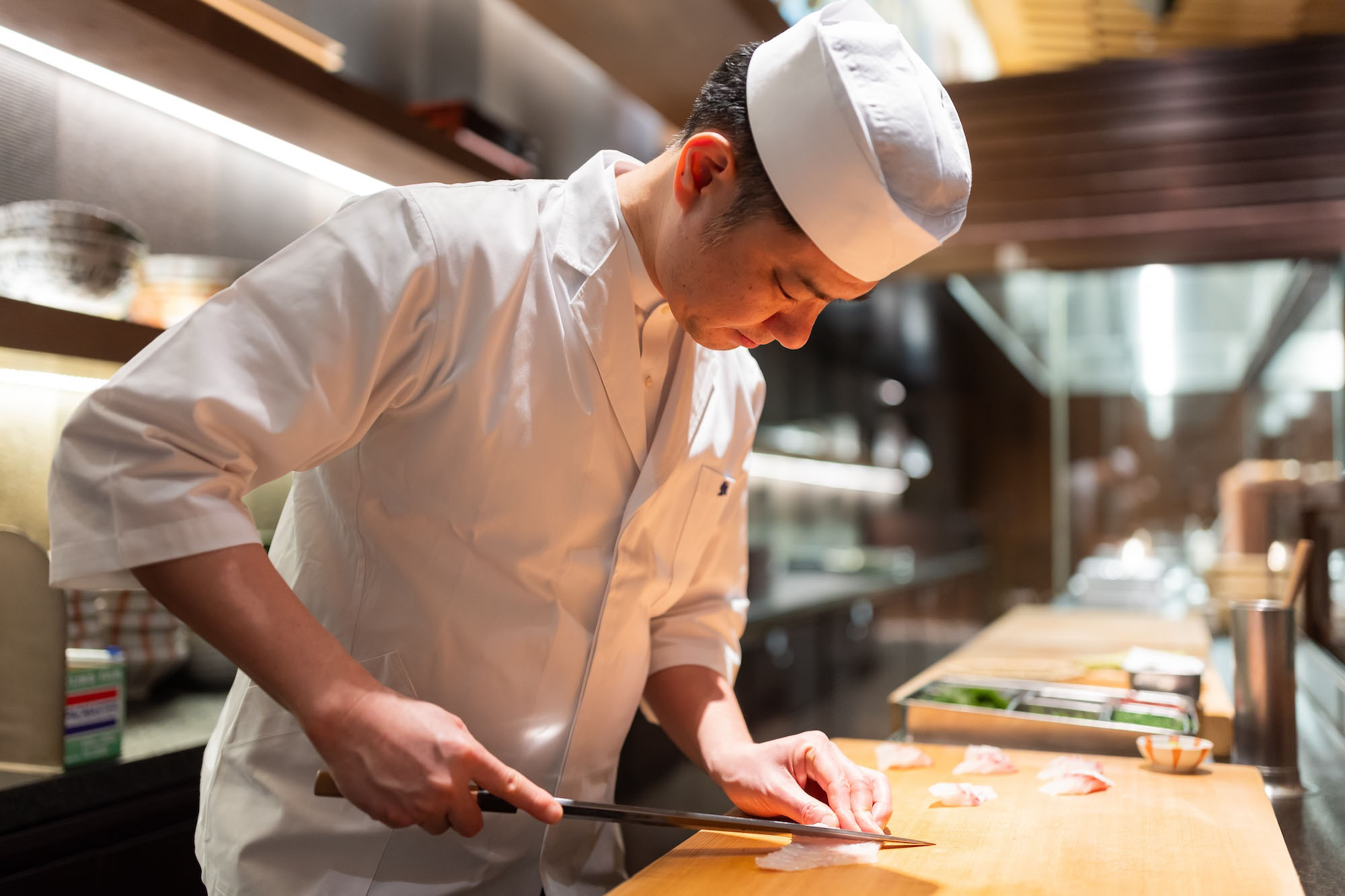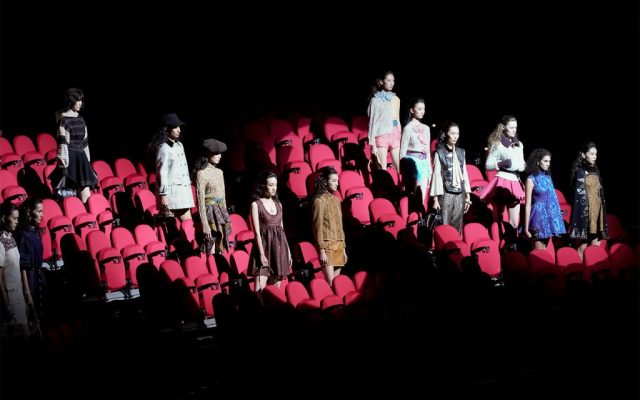It’s not every day that Macao gastronomes can experience a kaiseki meal prepared by one of the world’s most respected Japanese chefs. But in February, a handful of lucky diners got to do just that at Hiro by Hiroshi Kagata. As part of the Sands Celebrity Chef Series presented by Sands Lifestyle, Chef Yoshihiro Takahashi of three-Michelin-starred Hyotei restaurant in Kyoto held three spectacular pop-up dinners for the inaugural Macao Japan Spring Festival.
Takahashi, who visited Macao for the first time in February, says he was excited to introduce his family’s 450-year-old restaurant and share an authentic kaiseki experience. Known to showcase seasonal ingredients at the peak of freshness, during elegant multi-course menus, kaiseki cuisine has long been considered one of the most refined gourmet traditions.
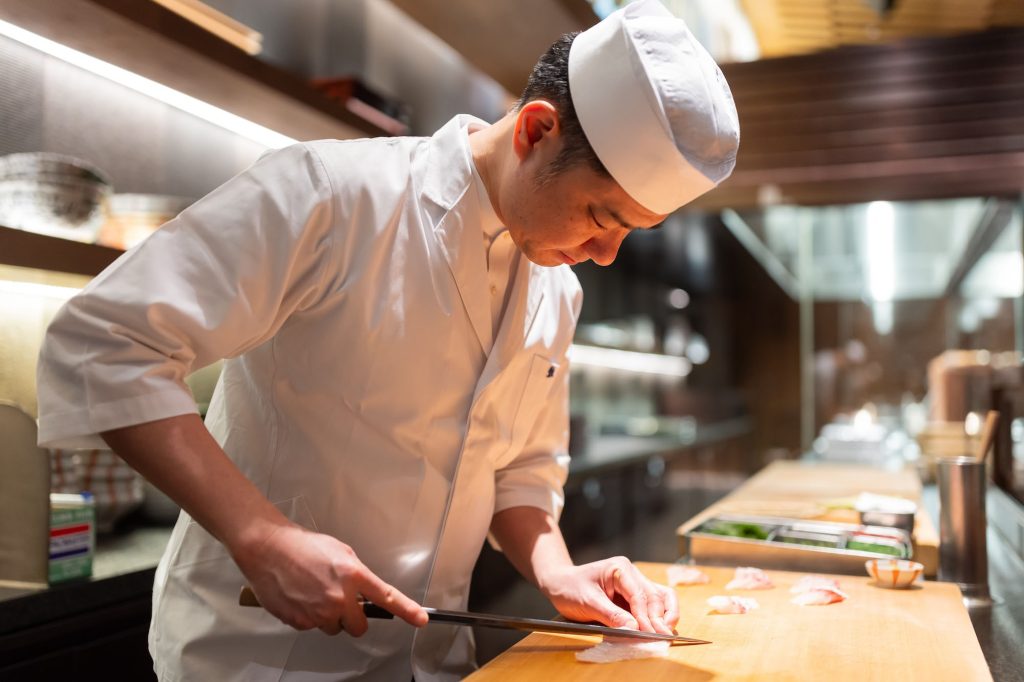
In the immersive atmosphere at Hiro at The Venetian, the Hyotei dinners featured Japanese elements, such as kimonos, flown in for the occasion alongside nine sublime courses featuring seasonal ingredients at their best.
“For those learning about Japanese culture, the important thing is the connection with nature,” says Takahashi. “We pay our respects to nature. I think that respect is one of the things that nurtures our food culture.”
Hyotei’s 450 years of history

One of Kyoto’s most famous restaurants, Hyotei is known for its immaculately prepared kaiseki cuisine and serene garden atmosphere at the entrance of the 13th-century Nanzen-ji Temple. Originally a tea house for pilgrims, the establishment has been run by the same family for over four centuries.
“I grew up in Hyotei from a young age. We were running the business like one big family with our employees – that’s still the case now,” he says.
When he wasn’t in the restaurant, Takahashi recalls spending time outdoors nearby, watching koi fish swim in the pond and ducklings hatch by the river. Nature remained central to his life – and his cooking – when he joined his father and mentor Eiichi Takahashi in the kitchen and eventually became the 15th-generation chef-owner.
“We are a restaurant that is closely connected with nature. The essence of Kyoto kaiseki cuisine is to cook according to the four seasons,” Takahashi says. “In kaiseki, the dishes follow a precise order from beginning to end. The rhythm of serving the dishes, the strength of the taste – we do these things very strictly. It’s like a culinary composition.”
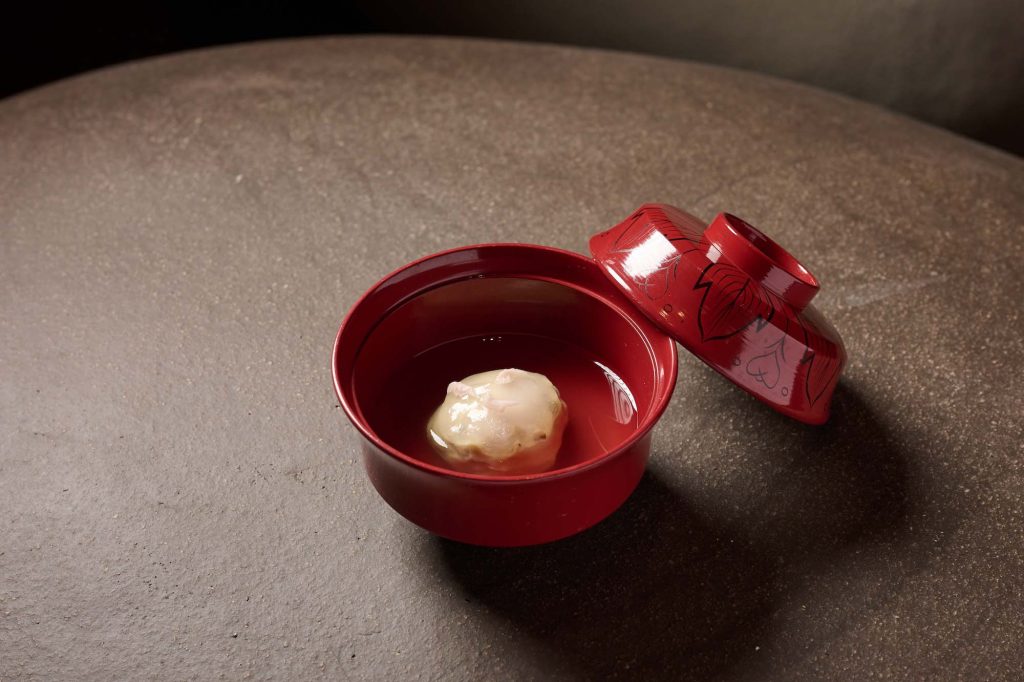
For example, juicy dishes are usually presented in quick succession, whereas cold or strongly flavoured dishes are spaced out throughout the meal. Moreover, Hyotei swaps out tableware and utensils to evoke a seasonal mood – think cool aquamarine porcelain in the summer or warm earthenware for winter.
While many aspects of the restaurant remain unchanged – like the original thatched roof, private tatami rooms and rustic tea house atmosphere – he’s not afraid to gradually update the menu.
“We are always thinking about how to offer food that fits the current times,” he says. “If you force a change, the customer will feel discomfort towards the dishes. We’re trying to change naturally, so that doesn’t happen.”
The best of Japanese culture
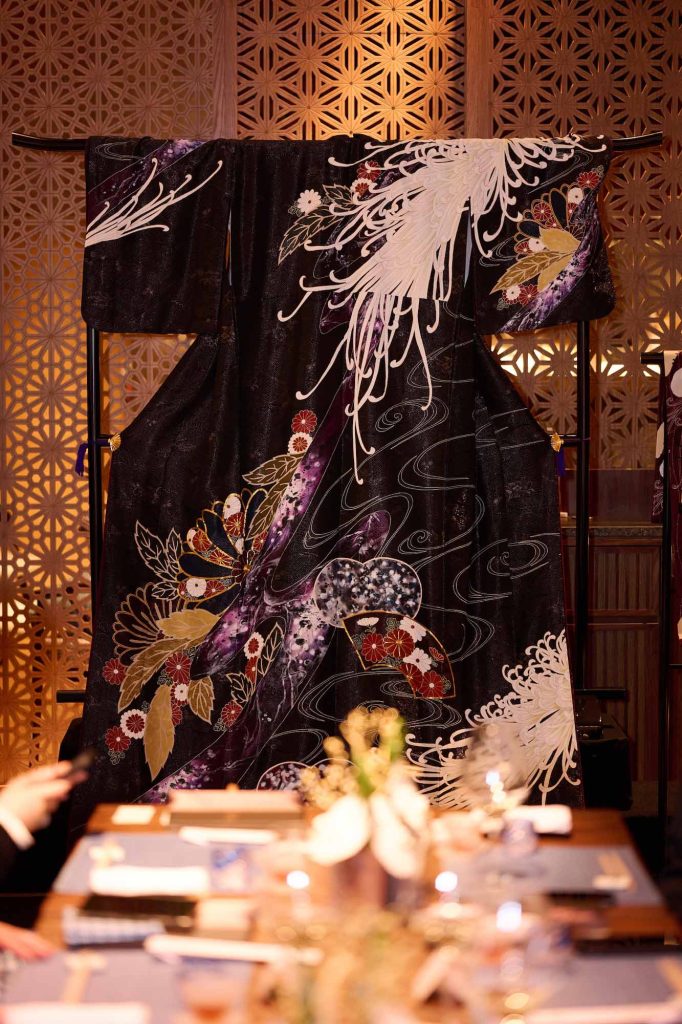
At Takahashi’s Hyotei pop-up dinners in February, Sands created an intimate experience for food critics and VIP guests with a red-carpet welcome and just 20 seats per dinner.
Focused on bringing the best of Japan to Macao, the chef incorporated many fresh ingredients and cultural elements from his home country while shaping the unique meal. Even the servers donned contemporary kimonos, made by the world’s oldest kimono brand, Yoshikawa Sensyo.
The menu started with a light and bright appetiser of bamboo shoots, broad beans, seitan, tomato, and horsetail (an ancient herb) alongside tilefish and jellyfish marinated in Shaoxing wine. Then came a Kyoto white miso soup with aromatic fatsia sprouts, sesame tofu and mustard with a deep umami flavour.
For the sashimi course, Takahashi and his team served delicate slices of Akashi seabream – a prized fish with a clean yet rich flavour – marinated in kombu (dried sea kelp) alongside freshly grated wasabi.
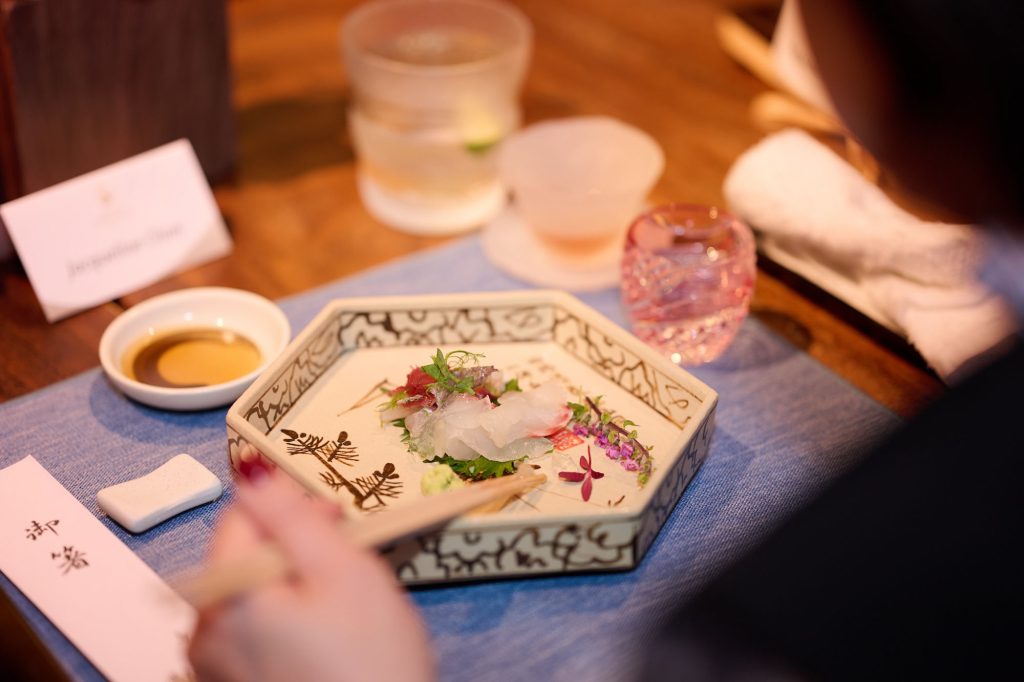
The next course was a Hyotei signature: Hamaguri clam croquettes served in a Japanese lidded bowl. To make the dish, Takahashi minces the clams, rolls them into a dough (made with fish paste, clam soup, egg, oil and arrowroot). “The dough is shaped in such a way that it softens and swells up. I make the soup stock using Japanese kelp and tuna flakes,” explains Takahashi.
Also on the menu was a seasonal platter of sushi and tempura, a simmered torched abalone with sea urchin, deep-fried spiny lobster with white asparagus, and burdock rice with roasted Tosa Akaushi beef. Limited to about 500 head of cattle exclusively raised in the Kochi Prefecture, on Japan’s Shikoku Island southwest of Osaka, this rare wagyu is known for its deliciously sweet flavour and beautiful marbling.
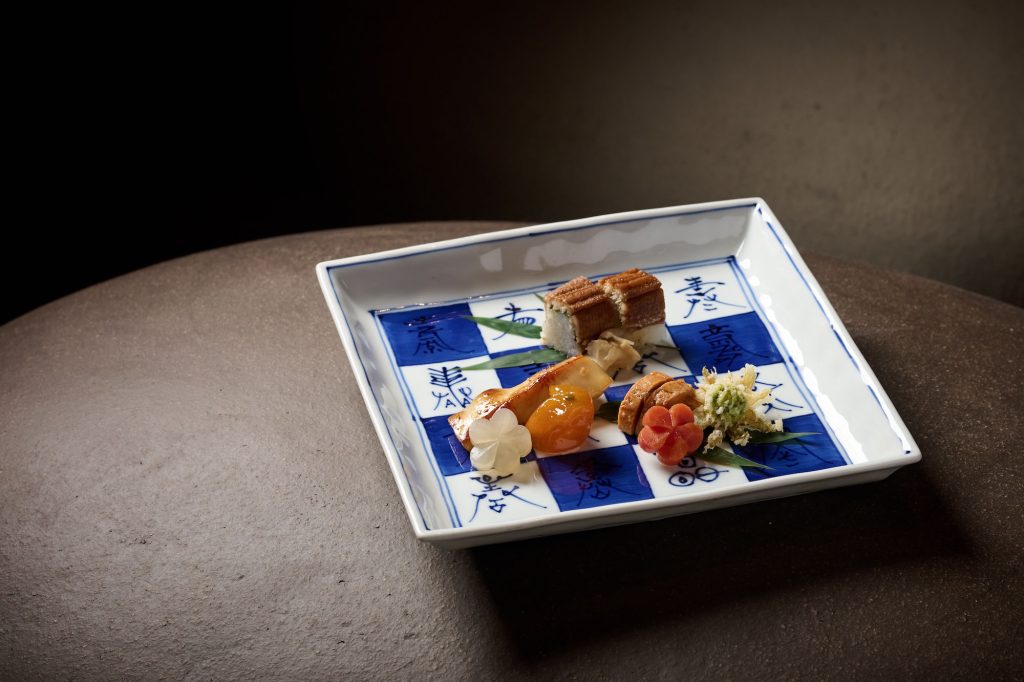
A duo of desserts – creamy egg yolk and soy-based orange ice cream, and a jelly-like warabi mochi – brought the spectacular dinner to a close.
Takashi says he was grateful to participate in the event, where he had a chance to share a slice of Kyoto with Macao.
“I’ve had the pleasure of working with Sands China, and I have a strong desire to help promote Japanese culture,” says Takahashi. “I wanted to offer the same culinary experience as in Kyoto. Although it can’t be completely the same, we’ve managed to deliver it as closely as possible. I hope that when the diners had their kaiseki meal, they felt like they were in Japan.”
